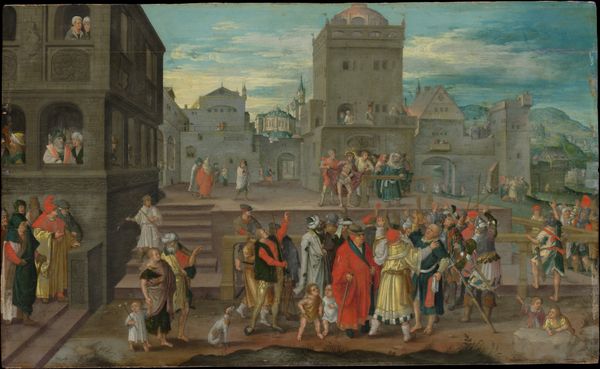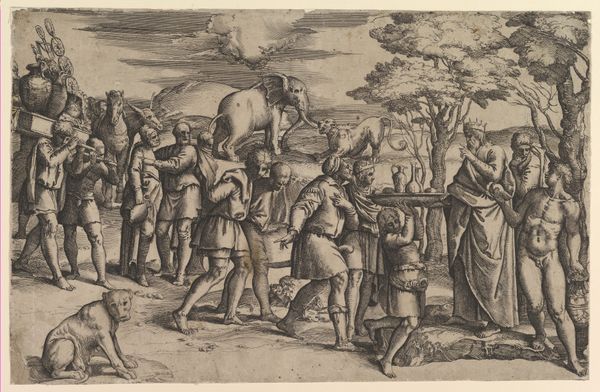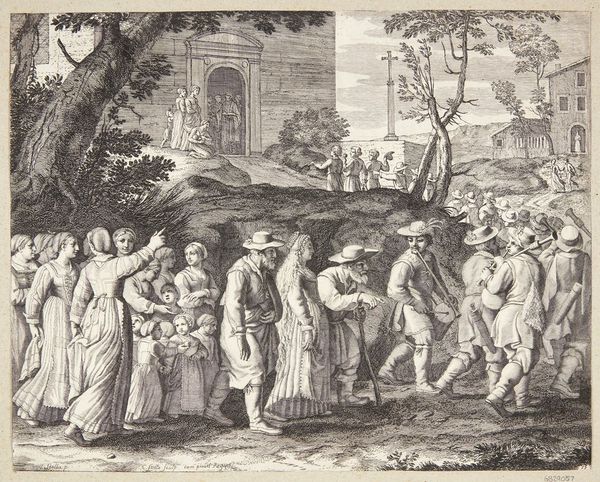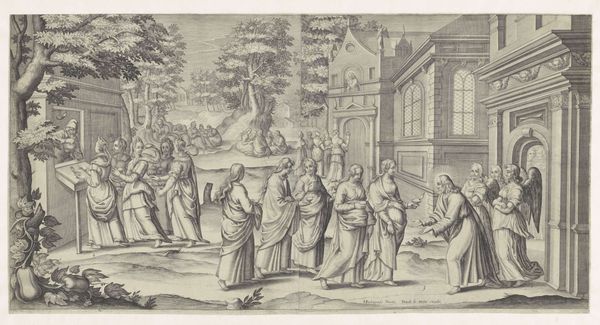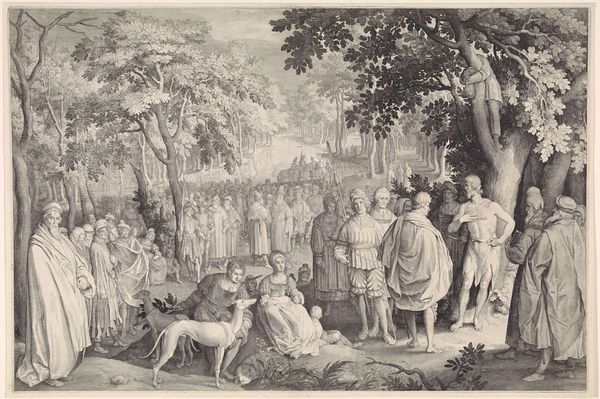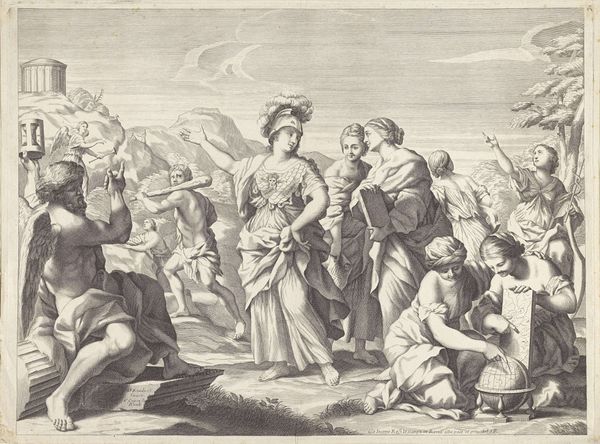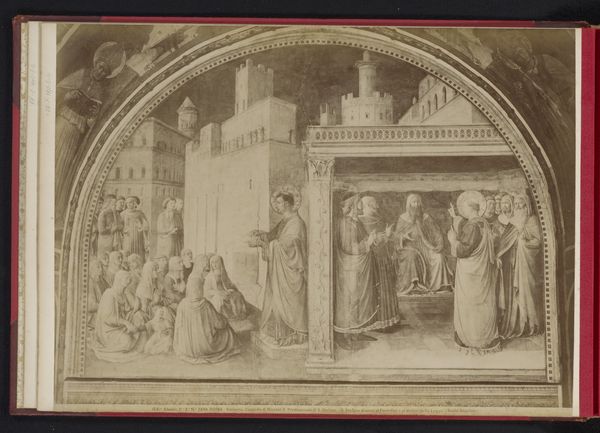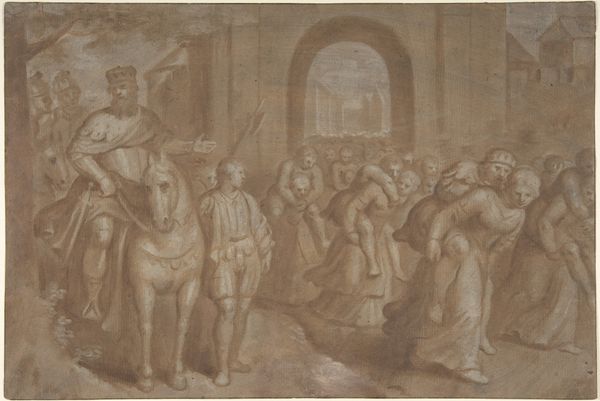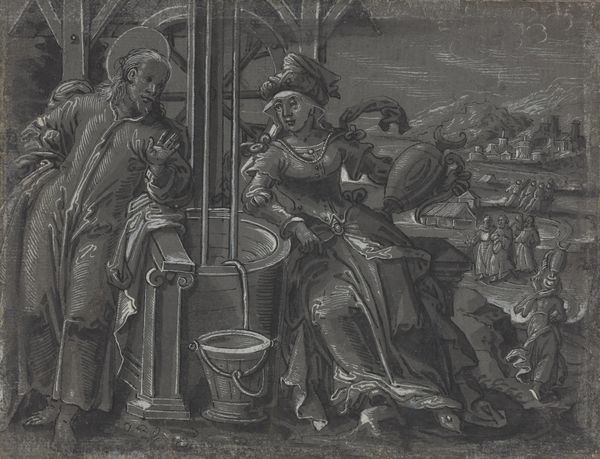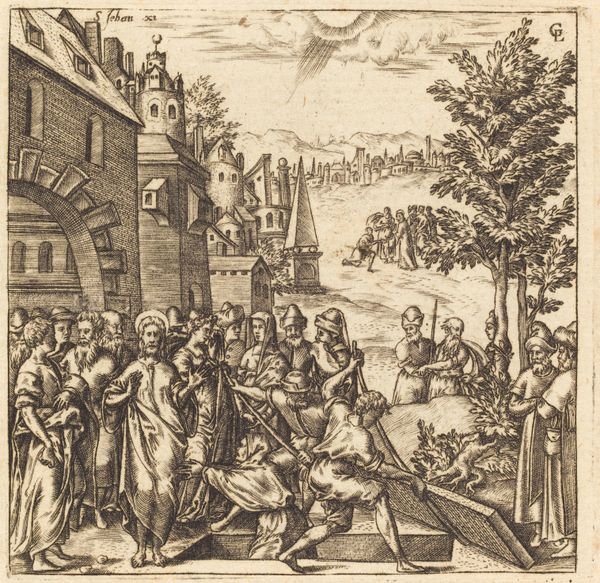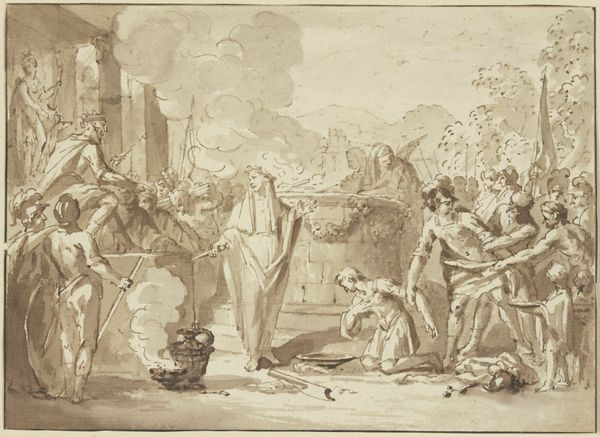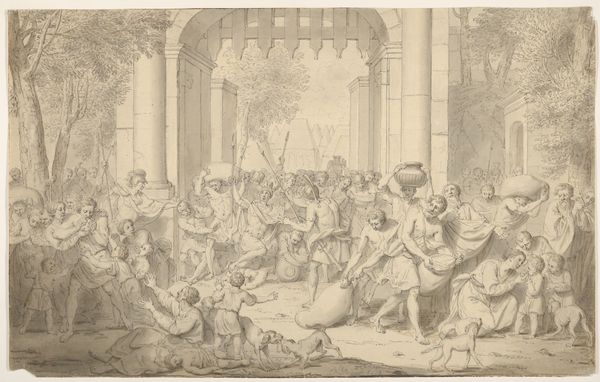
painting, oil-paint
#
narrative-art
#
baroque
#
painting
#
oil-paint
#
group-portraits
#
orientalism
#
genre-painting
#
watercolor
Dimensions: height 44.5 cm, width 58.5 cm
Copyright: Rijks Museum: Open Domain
Curator: Jean Baptiste Vanmour's oil painting, "Armenian Wedding," created sometime between 1720 and 1737, offers us a fascinating glimpse into Ottoman-era social customs. Editor: My first thought is how staged and observed this all feels, like a performance carefully curated for a particular gaze. Curator: Indeed. Vanmour, as a court painter in Constantinople, often depicted such scenes for European patrons, keen to visualize the exotic "Orient." We see here a wedding procession, divided along gender lines. Notice the group of women veiled in coral hues observing quietly to the right. Editor: Yes, and note how meticulously rendered their garments are. It's easy to get lost in the fabrics – the silks and brocades that surely denoted social status. I am most intrigued by the division of labor implied. How long did it take to create all this clothing? Curator: Exactly! The labor is key. Think about the workshops, the dyers, weavers all contributing to the spectacle. But beyond materiality, consider the purpose of its circulation in Europe. This painting contributes to a particular understanding, or misunderstanding, of Armenian culture within the Ottoman empire. Editor: I agree, its reception would differ drastically. One can get too caught up in this superficial splendor. I find my eyes constantly drifting back to the women's veils, obscuring their faces. Curator: The composition reinforces the cultural distance; Vanmour seems intent on recording details, less concerned with conveying intimacy. It’s as much about ethnographic record as aesthetic beauty. It is the material culture elevated through art production. Editor: Almost as if we are meant to gaze upon them but they're prohibited from engaging in our observation in return. I keep coming back to this odd power dynamic embedded into the painting's surface. I appreciate how thinking through its making encourages us to unpack complex political relationships from it. Curator: The image provides valuable documentation of a cross-cultural exchange and allows us to see the impact of production choices. Editor: I would add that Vanmour created this wedding not only as an observer but also in such a manner that it’s charged with colonial viewpoints and their reception by the dominant audiences.
Comments
rijksmuseum almost 2 years ago
⋮
An Armenian wedding procession makes its way to the church. First are the musicians. They are followed by the bridegroom, accompanied by a young man with a sabre. Then come the groom’s father, priest, and women of the party, including the bride dressed in red. Candle bearers walk before the bride and the groom; the couple will keep the candles after the marriage.
Join the conversation
Join millions of artists and users on Artera today and experience the ultimate creative platform.
